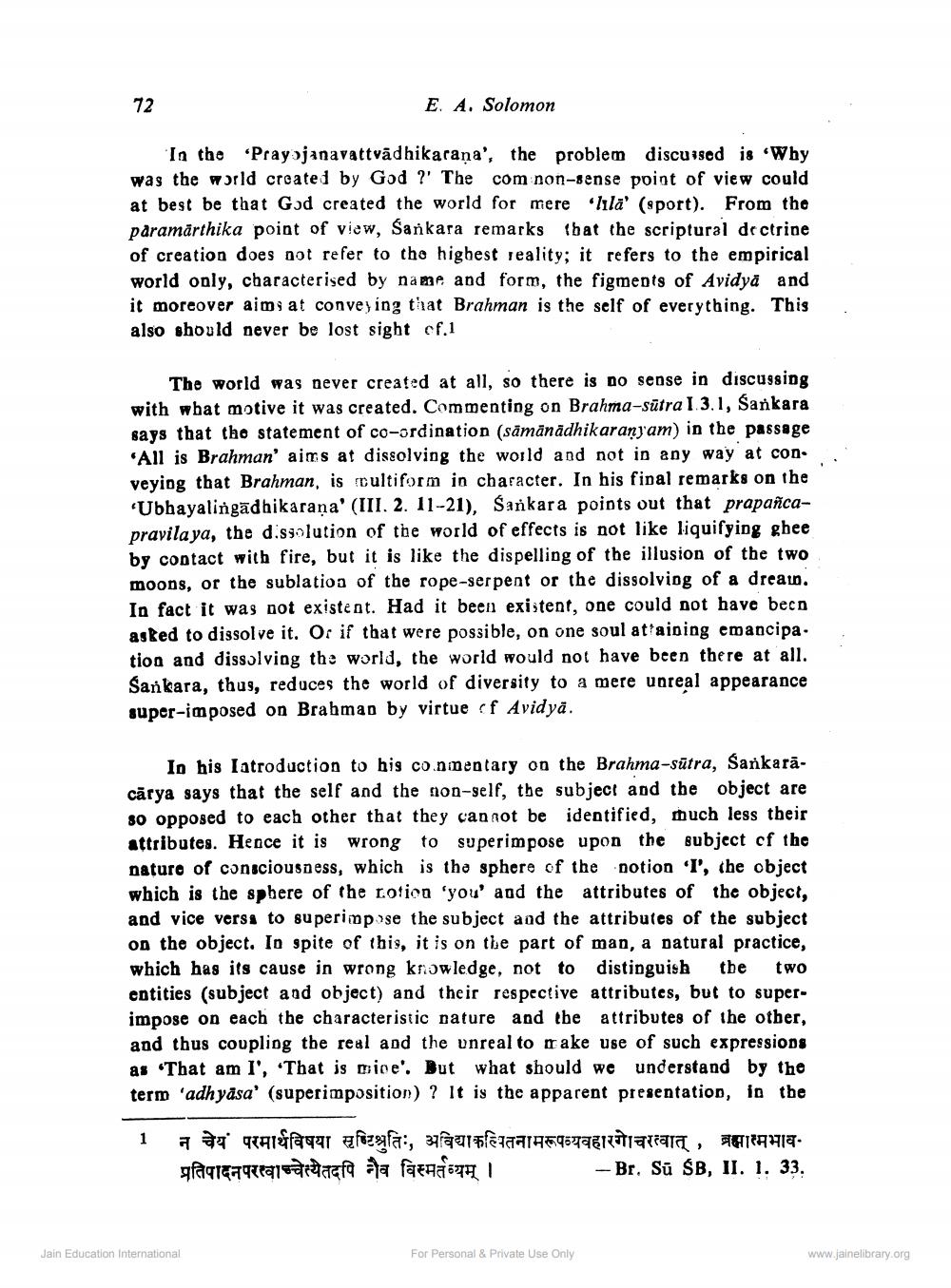________________
72
E
A. Solomon
In the 'Prayojanavattvädhikarana', the problem discussed is Why was the world created by God ?' The com non-sense point of view could at best be that Göd created the world for mere "lıla' (sport). From the paramārthika point of view, Sankara remarks that the scriptural doctrine of creation does not refer to the highest reality; it refers to the empirical world only, characterised by name and form, the figments of Avidya and it moreover aims at conveying that Brahman is the self of everything. This also should never be lost sight cf.1
The world was never created at all, so there is no sense in discussing with what motive it was created. Commenting on Brahma-sütra I 3.1, Sankara says that tho statement of co-ordination (sāmānādhikaranyam) in the passage All is Brahman' aims at dissolving the world and not in any way at conveying that Brahman, is cultiform in character. In his final remarks on the 'Ubhayalingadhikarana' (III. 2. 11--21), Sankara points out that prapañcapravila ya, the dissolution of the world of effects is not like liquifying gbee by contact with fire, but it is like the dispelling of the illusion of the two moons, or the sublation of the rope-serpent or the dissolving of a dream. In fact it was not existent. Had it been existent, one could not have been asked to dissolve it. Or if that were possible, on one soul attaining emancipa. tion and dissolving the world, the world would not have been there at all. Sankara, thus, reduces the world of diversity to a mere unreal appearance super-imposed on Brahman by virtue (f Avidya.
Io his latroduction to his co.nmentary on the Brahma-sūtra, Sankarācārya says that the self and the non-self, the subject and the object are 80 opposed to each other that they cannot be identified, much less their attributes. Hence it is wrong to superimpose upon the subject of the nature of consciousness, which is the sphere of the notion 'T', the object which is the sphere of the rotion 'you' and the attributes of the object, and vice verss to superimpose the subject and the attributes of the subject on the object. In spite of this, it is on the part of man, a natural practice, which has its cause in wrong knowledge, not to distinguish the two entities (subject and object) and their respective attributes, but to superimpose on each the characteristic nature and the attributes of the other, and thus coupling the real and the unreal to make use of such expressions as 'That am I', 'That is cioe'. But what should we understand by the term 'adhyāsa' (superimposition) ? It is the apparent presentation, in the
1
न चेय परमार्थविषया सृष्टिश्रुतिः, अविद्याकल्पितनामरूपव्यवहारगोचरत्वात् , ब्रह्मात्मभाव. प्रतिपादनपरत्वाच्चेत्येतदपि नैव विस्मर्तव्यम् ।
- Br. Sū SB, II. 1. 33.
Jain Education International
For Personal & Private Use Only
www.jainelibrary.org




